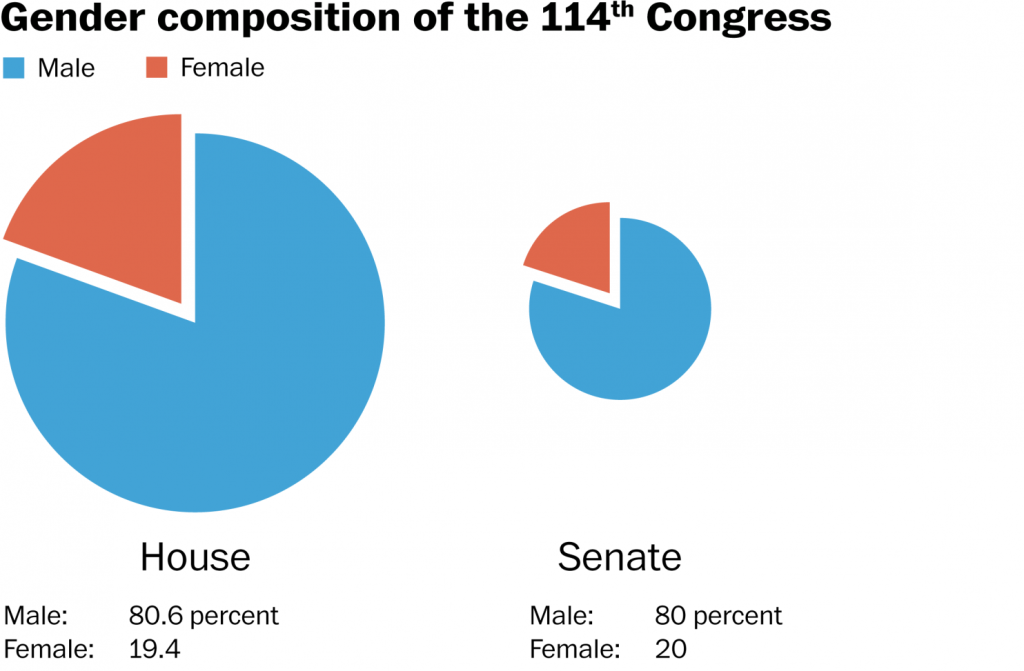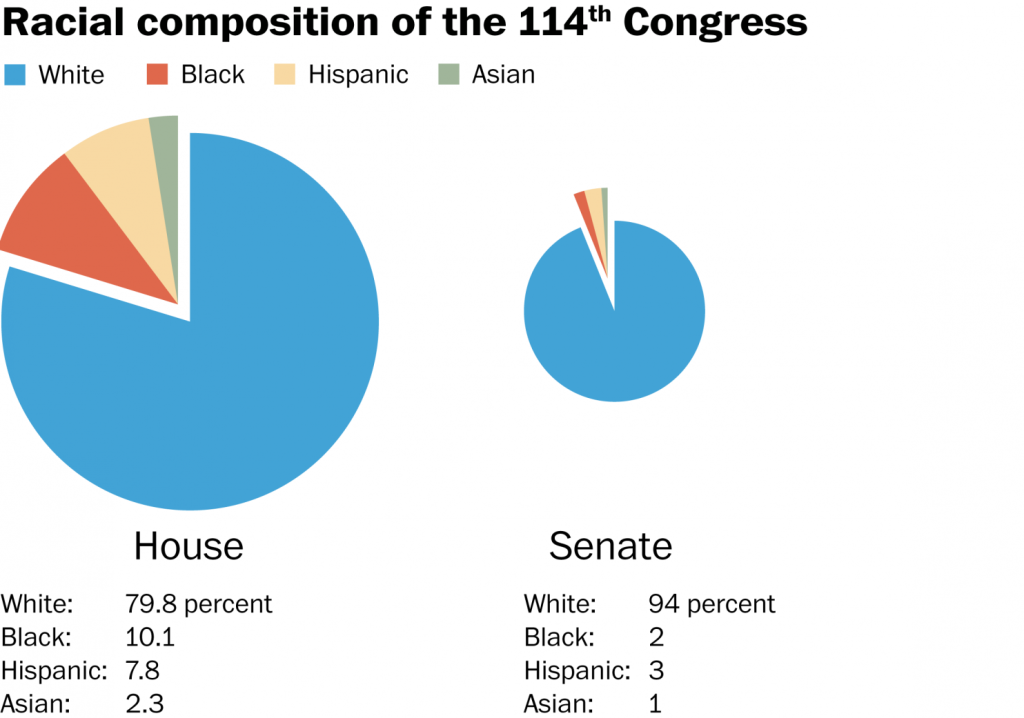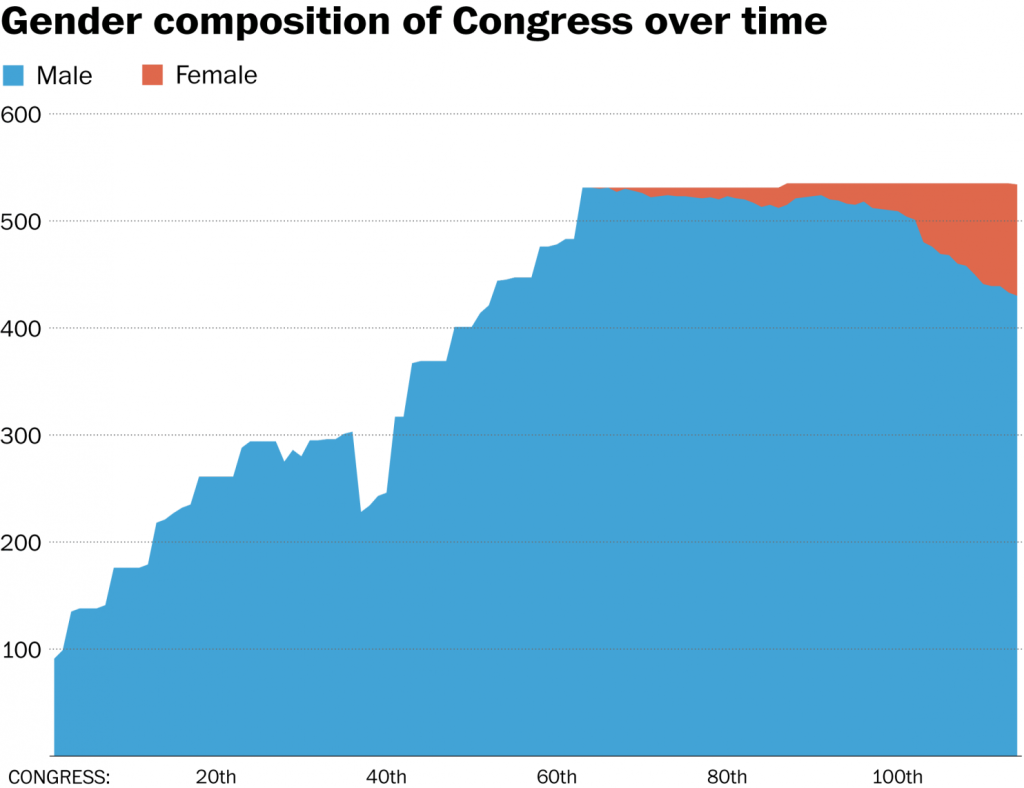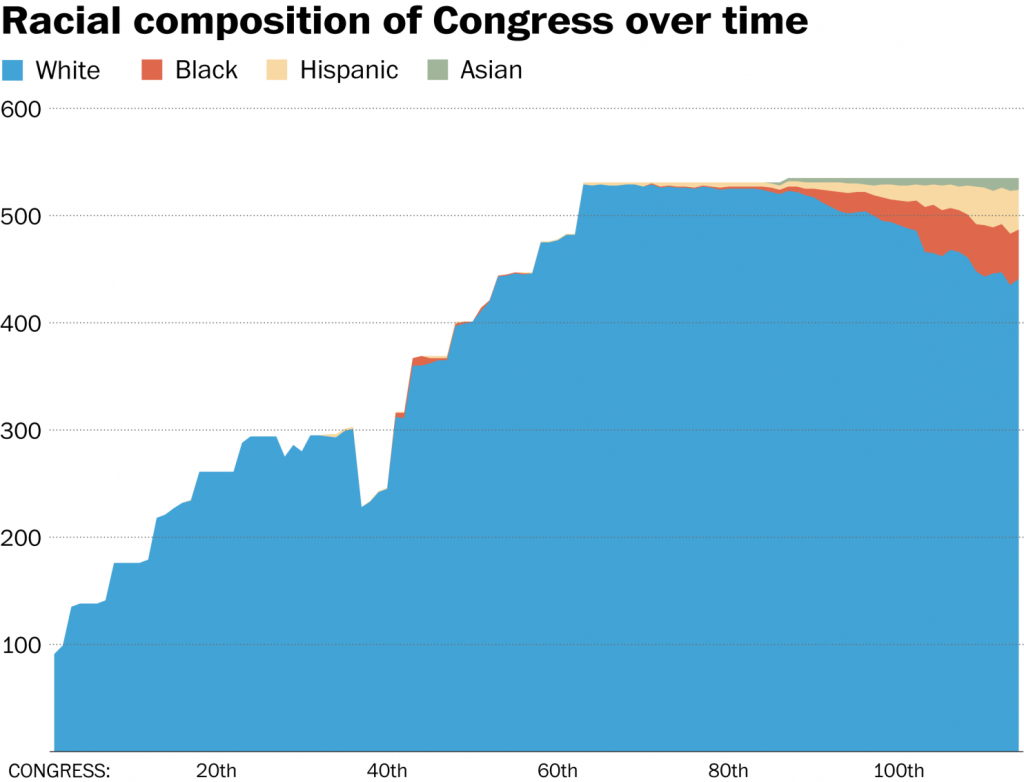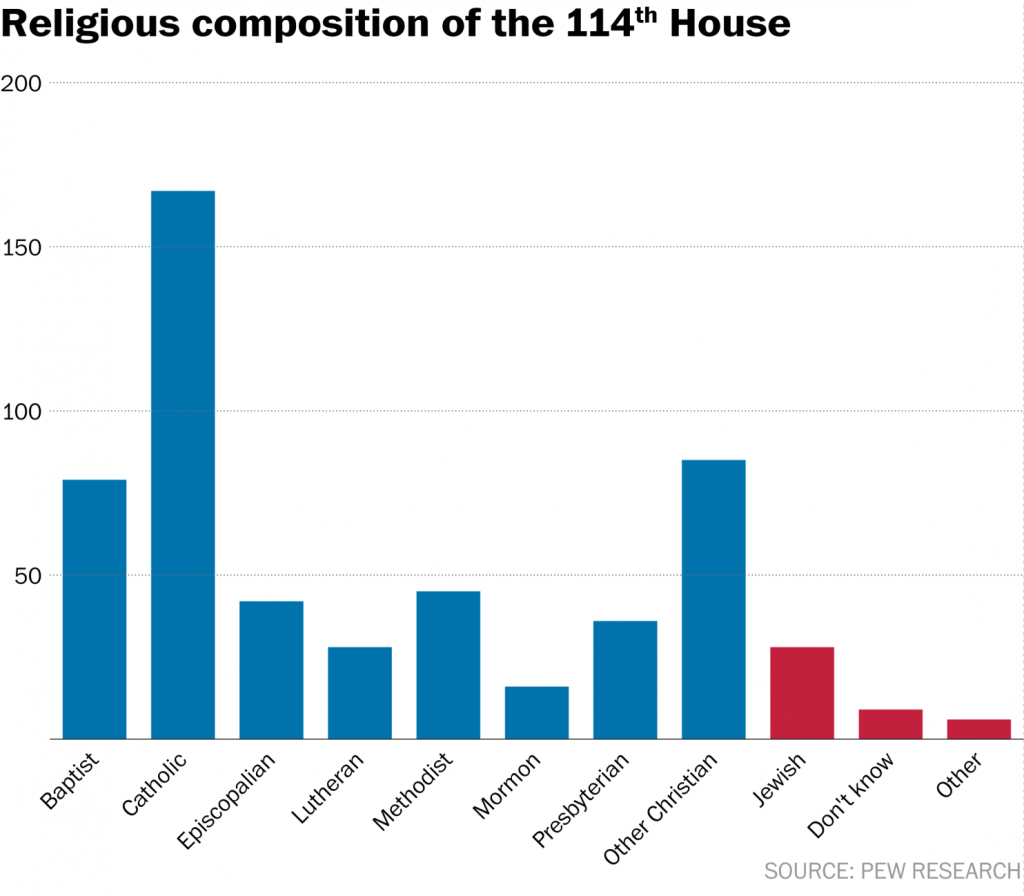The New U.S. Congress Is 80 Percent White, 80 Percent Male and 92 Percent Christian
ANGLO AMERICA, 12 Jan 2015
Philip Bump – The Washington Post
Trying to predict the gender and race of a member of Congress is like trying to predict who would win a basketball game between the 1996 Chicago Bulls and the 2015 New York Knicks. Which is to say: It is like trying to predict who would win in an arithmetic competition between you and a talking horse. Which is to say: It is like trying to guess how many jellybeans are in a glass jar that contains two jellybeans. Which is to say: It is easy.
The 114th Congress, which gets to “work” on Tuesday, is one of the most diverse in American history, comprised of nearly 20 percent women and just over 17 percent of which is non-white. Which means, of course, that four out of five members of Congress are white and four out of five are men. Ergo, given the name of a member of Congress (at random: Oregon GOP Rep. Greg Walden), you can probably guess his or her gender and race. (In case you want to see if you were right about Walden: here.)
According to a break-down from our colleague Reid Wilson, here are the demographics of the incoming crew.
In September, we looked at the slow trend away from white men in Congress, anticipating likely winners in November. Here is the overall trend on gender and race, with the new Congress in place. (We excluded New York’s 11th District, vacated by GOP Rep. Michael Grimm.)
The trend is slow, but it’s clear: Congress is getting a bit less white and a bit less male.
The Pew Research Center looked at another demographic data point this week: religion. Over the last few decades, Congress has gotten less Protestant, but it’s still overwhelmingly Christian.
And after the 2014 election, Congress actually gets slightly more Christian, with nine more Christians, five fewer Jewish members, one fewer Buddhist and one fewer unaffiliated member.
That’s not a surprise, given that the country itself is overwhelmingly Christian. The group that Pew finds most underrepresented on the Hill is those without a religious affiliation — comprising 20 percent of the public and 0.2 percent of Congress.
Congress is nearly as unrepresentative on race and gender. More than half of the population is female; white non-Hispanics are about 63 percent of the population. Congress is starting to look more like the rest of the country, in other words — but the 114th Congress won’t look much like it at all.
____________________________
Philip Bump writes about politics for The Fix. He is based in New York City.
Go to Original – washingtonpost.com
DISCLAIMER: The statements, views and opinions expressed in pieces republished here are solely those of the authors and do not necessarily represent those of TMS. In accordance with title 17 U.S.C. section 107, this material is distributed without profit to those who have expressed a prior interest in receiving the included information for research and educational purposes. TMS has no affiliation whatsoever with the originator of this article nor is TMS endorsed or sponsored by the originator. “GO TO ORIGINAL” links are provided as a convenience to our readers and allow for verification of authenticity. However, as originating pages are often updated by their originating host sites, the versions posted may not match the versions our readers view when clicking the “GO TO ORIGINAL” links. This site contains copyrighted material the use of which has not always been specifically authorized by the copyright owner. We are making such material available in our efforts to advance understanding of environmental, political, human rights, economic, democracy, scientific, and social justice issues, etc. We believe this constitutes a ‘fair use’ of any such copyrighted material as provided for in section 107 of the US Copyright Law. In accordance with Title 17 U.S.C. Section 107, the material on this site is distributed without profit to those who have expressed a prior interest in receiving the included information for research and educational purposes. For more information go to: http://www.law.cornell.edu/uscode/17/107.shtml. If you wish to use copyrighted material from this site for purposes of your own that go beyond ‘fair use’, you must obtain permission from the copyright owner.
